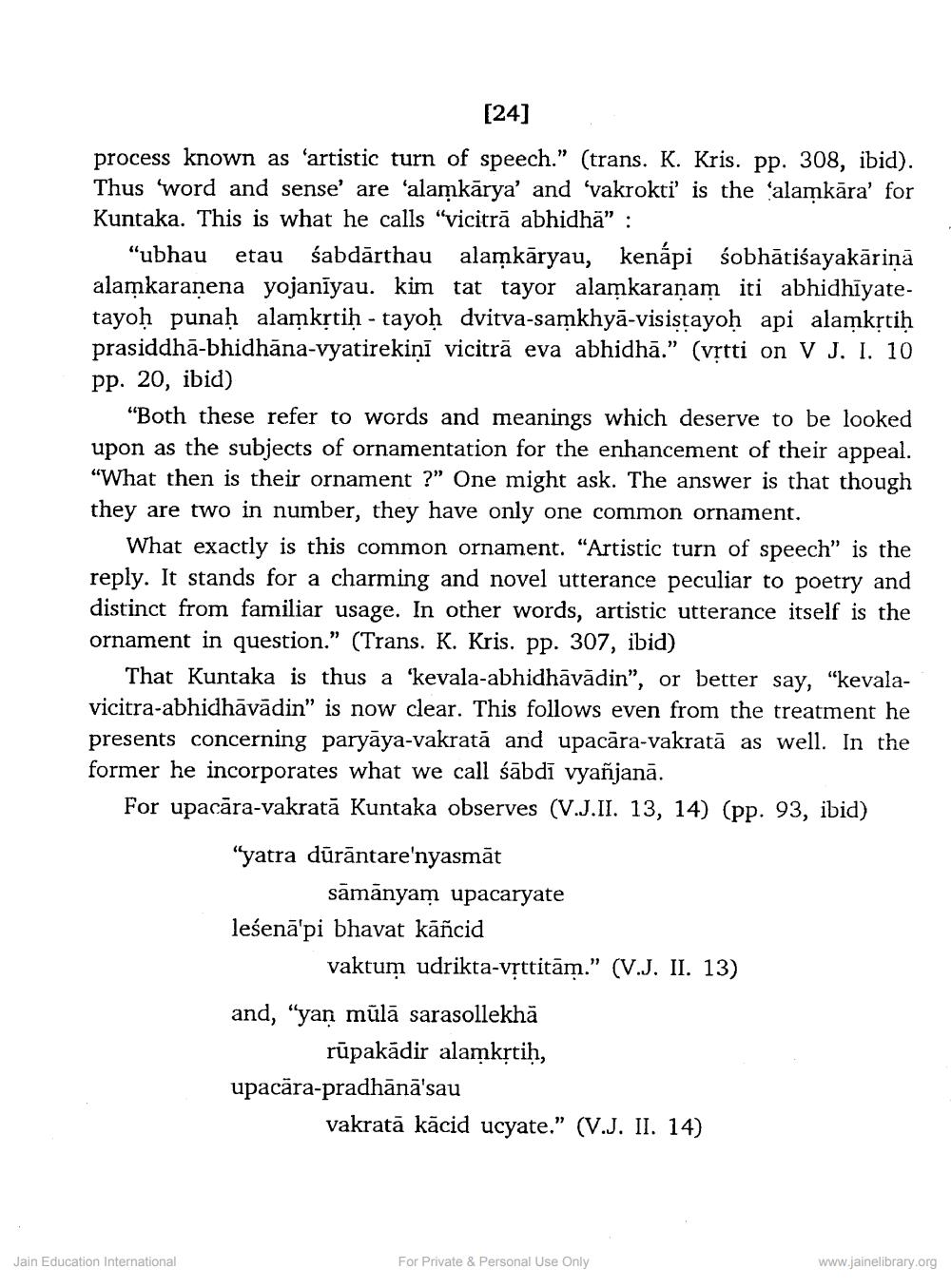________________
[24]
process known as 'artistic turn of speech." (trans. K. Kris. pp. 308, ibid). Thus 'word and sense' are 'alamkārya' and 'vakrokti' is the alamkāra' for Kuntaka. This is what he calls "vicitrā abhidhä" :
"ubhau etau sabdārthau alamkāryau, kenápi sobhātiśayakāriņā alamkaranena yojanīyau. kim tat tayor alamkaranam iti abhidhīyatetayoḥ punaḥ alamkrtiḥ - tayoḥ dvitva-samkhyā-visistayoḥ api alamkrtiḥ prasiddhā-bhidhāna-vyatirekinī vicitrā eva abhidhā.” (vrtti on V J. I. 10 pp. 20, ibid)
"Both these refer to words and meanings which deserve to be looked upon as the subjects of ornamentation for the enhancement of their appeal. "What then is their ornament ?" One might ask. The answer is that though they are two in number, they have only one common ornament.
What exactly is this common ornament. “Artistic turn of speech” is the reply. It stands for a charming and novel utterance peculiar to poetry and distinct from familiar usage. In other words, artistic utterance itself is the ornament in question.” (Trans. K. Kris. pp. 307, ibid)
That Kuntaka is thus a 'kevala-abhidhāvādin”, or better say, “kevalavicitra-abhidhāvādin” is now clear. This follows even from the treatment he presents concerning paryāya-vakrată and upacāra-vakratā as well. In the former he incorporates what we call śābdi vyañjanā.
For upacara-vakratā Kuntaka observes (V.J.II. 13, 14) (pp. 93, ibid)
"yatra dūrāntare'nyasmāt
sāmānyam upacaryate leśenā'pi bhavat kāñcid
vaktum udrikta-vịttitām.” (V.J. II. 13) and, “yan mūlā sarasollekhā
rūpakādir alamkặtih, upacara-pradhānā'sau
vakratā kācid ucyate.” (V.J. II. 14)
Jain Education International
For Private & Personal Use Only
www.jainelibrary.org




